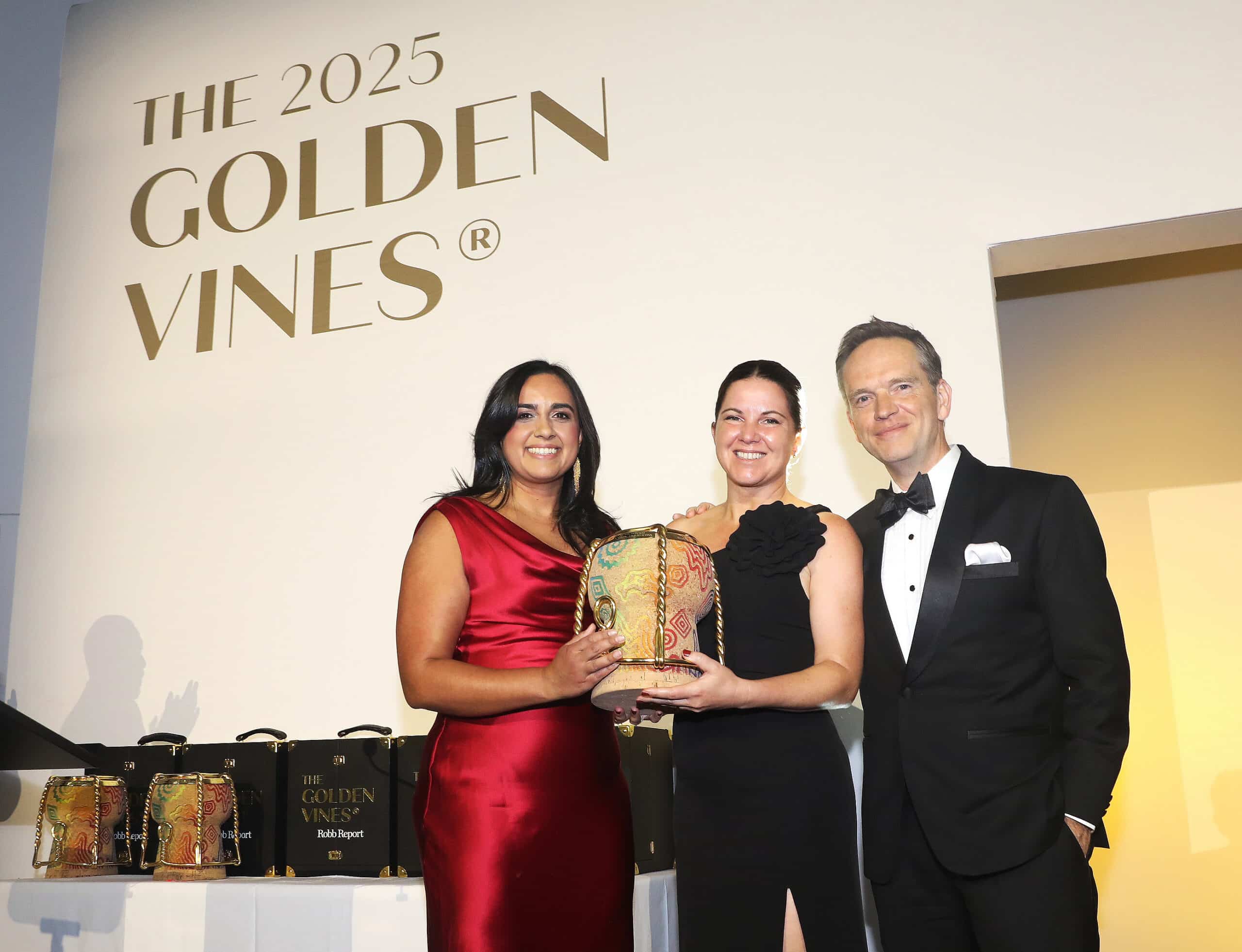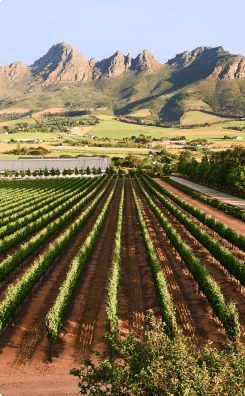Tim James: SA wine reputation grows – awards, buying trends point to change
By Tim James, 24 November 2025

1
Recently I asked Eben Sadie what had meant the most to him of the many international or local accolades or lofty ratings he’d achieved. He was in no doubt: it was those awarded him by teams of what he called his peers: sommeliers, winemakers, fine wine merchants, and other wine professionals, rather than individual “taste-makers”. He instanced his 2017 Winemakers’ Winemaker Award, whose annual winner is chosen by Master of Wine winemakers and previous winners, and also being named in the Golden Vines Awards for three successive years (2022–2024) as Best Rising Star, voted for by a panel of towards a thousand top wine professionals in more than 100 countries.

It’s odd at first thought to consider Sadie as a “rising star” – hasn’t he already risen enough to disqualify him from that category? In fact, the same award went in 2025 to another great local producer, Mullineux & Leeu Family Wines (for Mullineux and Leeu Passant). One would also have thought they had pretty well made it. More to the important point, Chris Mullineux told me much the same story as Eben had about the meaningfulness of the award, as a tribute from a whole cohort of professionals, compared with the opinion of one taster, however well-established – let alone a panel of competition judges tasting blind and therefore without an understanding of context and entangled with the problems inherent in working through more-or-less large line-ups. Neither Mullineux nor Sadie enter such competitions. (By the way, I don’t know how many South Africans are invited to judge for the Golden Vines thing. I voted, as I remember, in the initial Golden Vines Report, of 2019, and perhaps the next year; but – increasingly – simply don’t have the international experience to be able to do so with integrity across all or even many of their categories, so in honesty I now don’t participate.)
In the context of the importance of context, I correctively thought a bit more about Sadie and Mullineux as “rising stars” in relation to other winners of these prestigious awards. This year, just another five wineries featured: Vega Sicilia (Best Fine Wine Producer); Egon M̴üller (Best in Europe); Jean Trimbach (Hall of Fame); Harlan Estate (Best in the Americas); Henschke (Best in Rest of World). The European ones on that list date to 1864, 1797, and 1626 respectively; the two New World ones to 1984 and 1868. Knowing that, I must acknowledge that suggesting wineries founded in 1999 and 2007 to be only now rising to the level of those senior wineries is more understandable. Not to mention that it’s really a pretty smart compliment. Sadie and Mullineux must wait a few years or decades to be eligible to be Best in Rest of World, and a bit longer (centuries?), no doubt, for Best Fine Wine Producer overall.
This double success of Sadie and Mullineux in recent years, coupled with another Golden Vine award this year, to Rosa Kruger of the Old Vines Project, is a pretty impressive national achievement, noted on a few local websites, in a patriotic sort of way; while this platform doesn’t typically foreground external awards, it feels worth noting here.
Another reported survey, of a very different kind and involving a set of customers of international fine wine, came out recently. It is, I think, worthy of as much intrigued attention. 67 Pall Mall is a notable and smart fine wine hub based in London. It recently released a Fine Wine Trends report “chronicling the evolving tastes of Members and emerging trends within the wider fine-wine scene”. Consulted were 3,800 members of the London Club – 74% male, they tell us, average age 50, 23% being members since the opening, and ranging, I should guess (the report, with pursed lips, doesn’t say), from pretty rich to very rich. The full report makes for interesting reading, but I want to pull out here a few bits of parochial interest.
Such as the regional breakdown of wine sold at the club in the first six months in 2025, which was compared to the figures for the same period in 2016 (obviously much lower given lower membership). The dozen countries/regions selling the most “units” in 2025 ranged from Burgundy (7,215), Champagne (5,251) and Bordeaux (4,282), via California (1,365) to South Africa (991) and Australia (936). Back in 2016, Australia was a bit ahead of South Africa, so that’s a significant, if small, shift. The report notes that, in terms of sales at the London Club, “the most notable regions in terms of growth over the last decade have been South Africa, England, Sicily and Piedmont.”
Of at least as much interest to us, for the members’ home consumption, the ten regions from which they bought wine most regularly (they could nominate five regions) were, in this order: Burgundy (14.41%), Bordeaux, Champagne, Tuscany, Piedmont, Rhône, California, Rioja, South Africa, Australia (both of the last two at 2.9%).
Perhaps most of the members aren’t as rich as I imagine (or maybe they’re just meaner). They were asked about their thoughts for buying wine in the future and there is “widespread concern about the ‘exorbitant’ prices of fine wines, particularly from Burgundy and Bordeaux”. They were asked about which regions they were expecting “to be buying more of over the next 10 years”, and this is particularly encouraging for South African producers of fine wine. Despite its expensiveness, Burgundy heads the top-10 list at 40% (Bordeaux has fallen off entirely – as has Australia). Italy is second (35%), followed by South Africa (23.6%) and Spain (23.2%).
Here’s another sign of what is seeming to me to be an increased current interest in South African wine at the highest level. Although Jancis Robinson has always been a staunch admirer – like me, especially of the white wines. To make a connection with the above paras, I can point out that Jancis came out way in the lead (27.1%) of media/critics consulted by the 67 Pal Mall drinkers (followed by Decanter and, of relevance to South Africa coverage, Tim Atkin and Neal Martin quite far behind in sixth and seventh places (around 5%).
So it’s not unimportant that Jancis actually opened a recent article in the Financial Times about sparkling wines for the festive season by stating that “South African ripostes to champagne, called Cap Classique, offer surely the best value today, rivalled by France’s Crémants.” A pretty firm claim, that. I reckon Jancis’s list is going to sell a lot of Cape bubbly in the UK over the next month, from Graham Beck Vintner’s Selection Rosé to the same producer’s pricey Cuvée Clive, via quite a few other names (see the free-access article here).
I really do just have this vague feeling that perceptions of South African fine wine are changing a bit. Another sign comes on the internationally vitally important website wine-searcher.com (it could be quite important to local buyers of foreign wines too, unless they don’t want to sickeningly realise the relative expensiveness of those wines in South Africa). As well as effectively comparing international prices (a restricted, but still useful, search is available unless you subscribe), there are plenty of well-informed and interesting articles, including national/regional overviews mostly made in terms of price and ratings (what else should wine reporting be about, huh?).
A recent article on the website looks at South Africa, and opens by wondering why the country “struggles to make a lasting impact on the international wine scene”. It hints at some answer to this, or at least explicates the problem, by admitting that “rather shamefully” this is “the first time we have combed through our database to run a list of the best South African wines” (“best” judged by their access to prices and scores). That candid admission is really my only point here – the list is predictable, heavily featuring Sadie, with Vin de Constance, a chenin from Alheit, Porseleinberg Syrah, Kanonkop Black Label Pinotage, and “a minimalist straw wine from Mullineux”.
The article concludes with the suggestion, or query, that: “Maybe South African wine’s time in the sun is finally coming around again?” Yes, well, we’ve heard that before; let’s see.
- Tim James is one of South Africa’s leading wine commentators, contributing to various local and international wine publications. His book Wines of South Africa – Tradition and Revolution appeared in 2013.
Comments
1 comment(s)
Please read our Comments Policy here.







Wessel Strydom | 24 November 2025
Thank you Tim. Once again a great piece of writing.